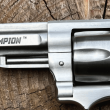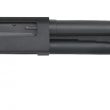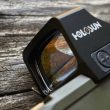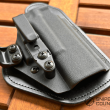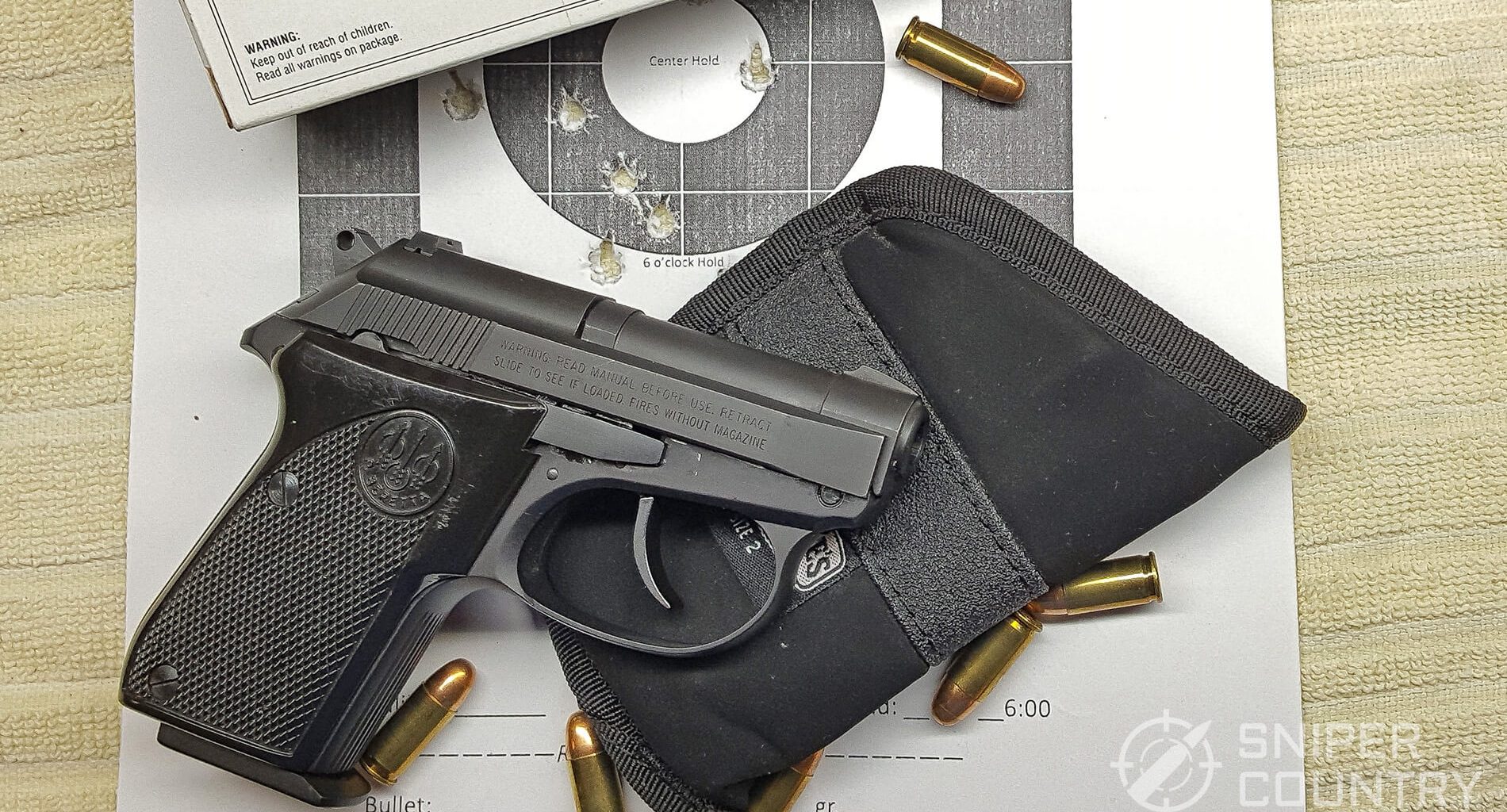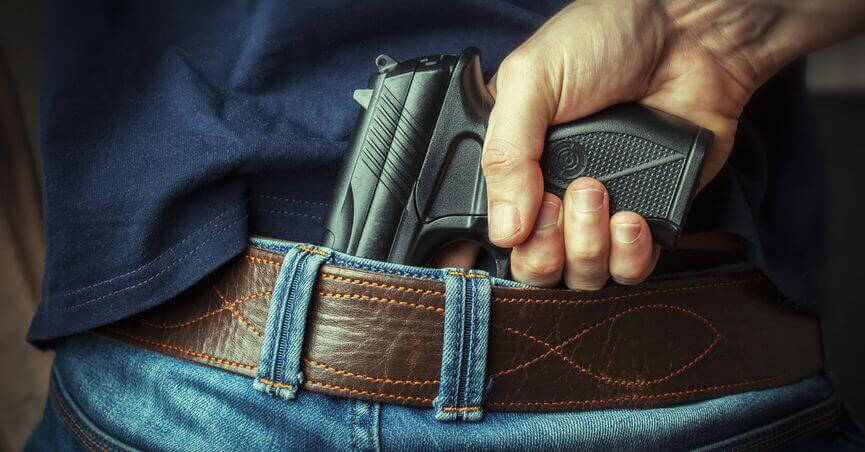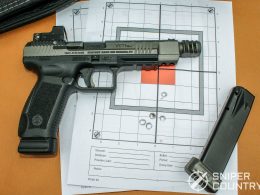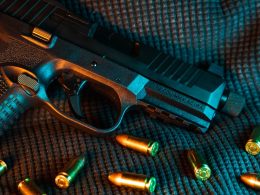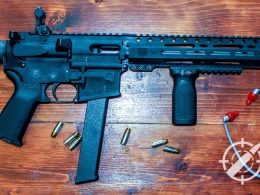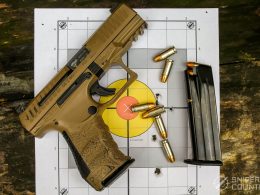In this Article:
If you’re looking for an ultra-compact pistol chambered in .32 ACP, the Beretta Tomcat 3032 is worth checking out. This little handgun is extremely concealable — perfect for daily carry — and packs a decent amount of firepower.
This tiny pistol is simple to operate and features a tip-up barrel that makes loading and unloading a breeze. But is it worth it? In this review, we’ll take a closer look at the specs and features of the Tomcat 3032 to see if it’s the right fit for you.
Beretta 3032 Tomcat Review: Pros and Cons
- Exceptionally accurate to shoot
- Feels comfortable on the hand
- Low recoil
- Very concealable design
- Tough and durable build
- Not quickly reloadable
- Hammer is too small
BONUS OFFER: Get your free shooting range targets to print at home!
Get your free targets to print at home!
The .32 ACP: Browning’s First
John Browning perfected the handgun cartridge in 1899 for Fabrique Nationale for use in their FN M1900 pistol. The round is also known as the .32 Auto and the 7.65 Browning Short. Here is the original pistol it was designed for:
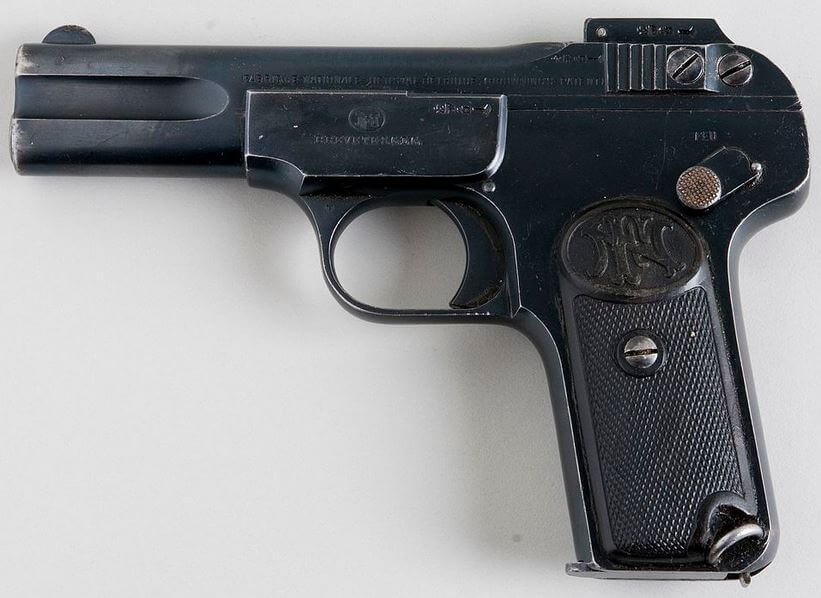
The .32 was Browning’s first pistol cartridge and utilized some interesting design features. First, it is a straight-walled case for reliable blowback operation. Secondly, it is semi-rimmed. Most semi-auto cartridges headspace on the case mouth, but the .32 headspaces on the case rim for reliable feeding from box (pistol) magazines.
The .32 ACP Caliber’s Popularity
European nations snapped up guns chambered for the .32 by the thousands. Walther chambered its popular PPK in .32, then later .380. Mauser even made .32 pistols. Police agencies and military units bought them enthusiastically.
Another trivia note — the .32 ACP has been chambered in more handguns than any other round. Even Ian Fleming, when writing his “James Bond” novels, was encouraged to give his spy a Walther PPK in .32 ACP by no other than noted firearms expert of the day Geoffrey Boothroyd.
The caliber was so popular that, between its introduction in 1899 and 1909, Fabrique Nationale alone chambered approximately 500,000 guns for it. That doesn’t count what other companies were making.
Even H&K got into the .32 ACP game — they made about 12,000 guns (their model HK 4) for the German police in 1967. It was their first pistol.
The cartridge came to roost across the pond, here in America. Here are a few of the guns it was originally chambered in:
- The Colt Model 1903 Pocket Hammerless
- The Ruby pistol
- Browning Model 1910
- Savage Model 1907
The .32’s popularity rode a crest well into the 20th century, then died out a bit as other affordable, small guns were chambered for more effective calibers such as the .380 and the 9mm. But, with the wave of modern bullet technology innovations that occurred during the last twenty years or so, the .32 is (re)gaining its popularity.
With guns such as the seven-ounce Kel Tec P32, one can have a firearm in a pocket (CCW holster) and almost forget that it’s there yet still have access to a firearm in case of immediate need. The old .32 ACP is still alive and kicking after 120 years.
BONUS OFFER: Get your free shooting range targets to print at home!
Get your free targets to print at home!
So much for the cartridge. Now, let’s look at the gun.
The Beretta 3032 Tomcat Review
If you look at Beretta’s website, you will soon discover that they are very proud of their .32 ACP pistol. Not so much in their price, but in the copy written about the gun.
I quote: “The Beretta 3032 Tomcat Inox is tiny, sized like an average cell phone. Besides offering the power of the .32 ACP cartridge, it sports a tough and durable stainless-steel finish.” So, if you are looking for a cell phone-sized pistol that shoots the powerful .32 ACP cartridge, here’s your gun.
If you want this gun in another caliber, the look-alike Model 21A Bobcat comes in .22 LR and .25 ACP in a blued finish, or the Model 21 in .22 only in Inox.
The Tomcat is a very concealable gun and shoots well. But in my opinion, Beretta has a winner in the Tomcat, at least in part due to one feature — the tip-up barrel.
Beretta 3032 Tomcat Review: Barrel
The barrel of the Tomcat tips up when you move the lever above the trigger forward — it unlatches.
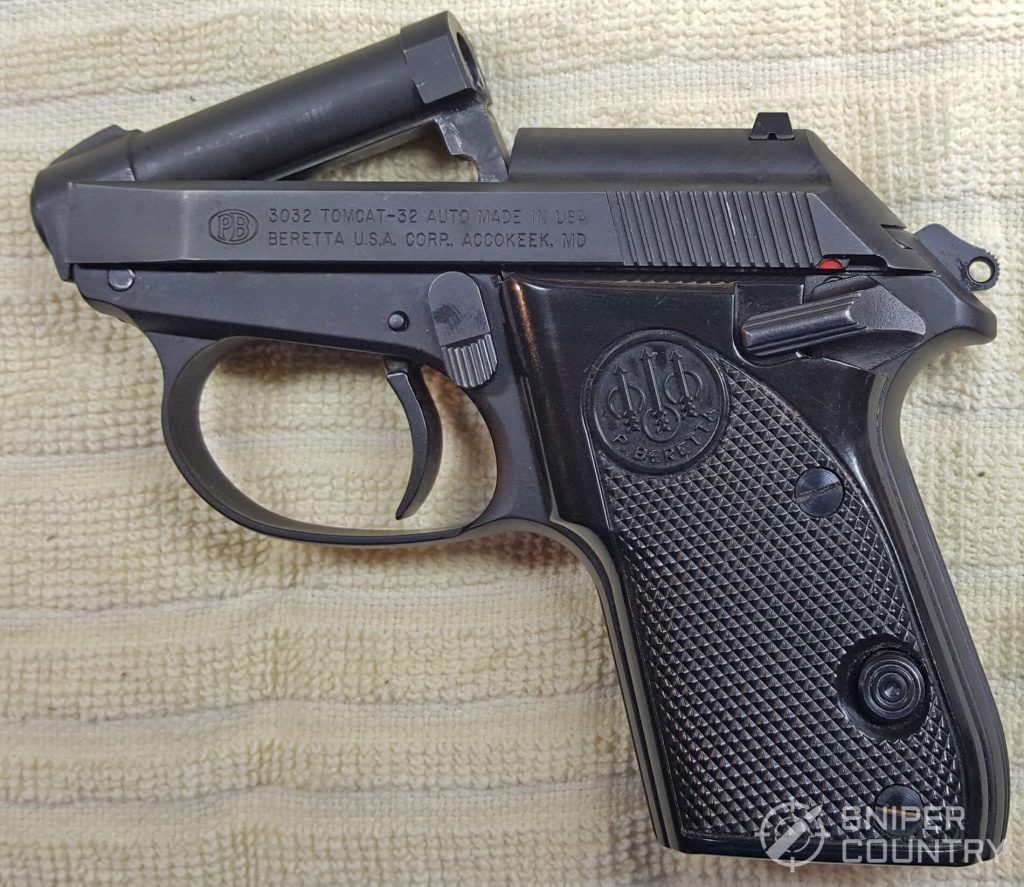
If you are like me and are starting to have (or already have) arthritic complaints from your hands when you try to rack a pistol’s slide, this little feature negates the need to do that.
Press the lever forward to pop the barrel up and insert a cartridge into the chamber. Snap the barrel down, insert a loaded magazine, and you’re good to go. Very easy and a good idea. The magazine holds seven, plus you already have one in the pipe. Let’s look at specs now, and then we’ll hit some of the main features of the gun before moving on.
Beretta 3032 Tomcat Review: Specs & Pictures
| Caliber: | 7.65 (.32 ACP) |
| Action: | Traditional single/double |
| Barrel: | 2.4 inches |
| Capacity: | 7+1 |
| Overall Height: | 3.7 inches |
| Overall Length: | 4.92 inches |
| Overall Width: | 1.1 inches |
| Weight (Empty): | 14.5 ounces |
| Safety: | Thumb Safety |
| Warranty: | One-Year Limited to the original owner with an additional two years added if you register the gun with Beretta |

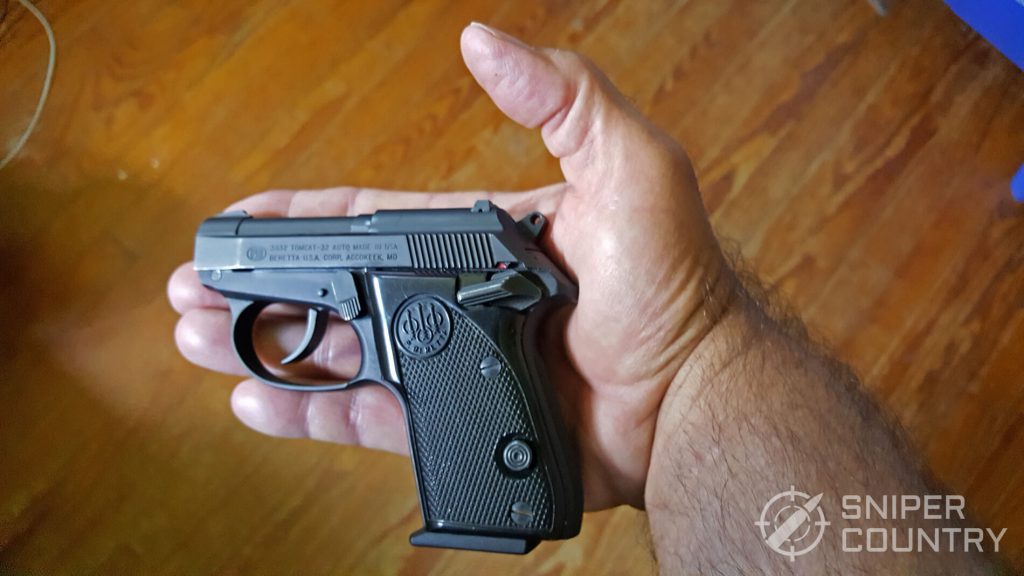
Here are some of its selling points.
#1 Size
The Tomcat is made for your pocket. It is pretty much de-horned, except for the front sight (but it sticks up so little it shouldn’t matter):
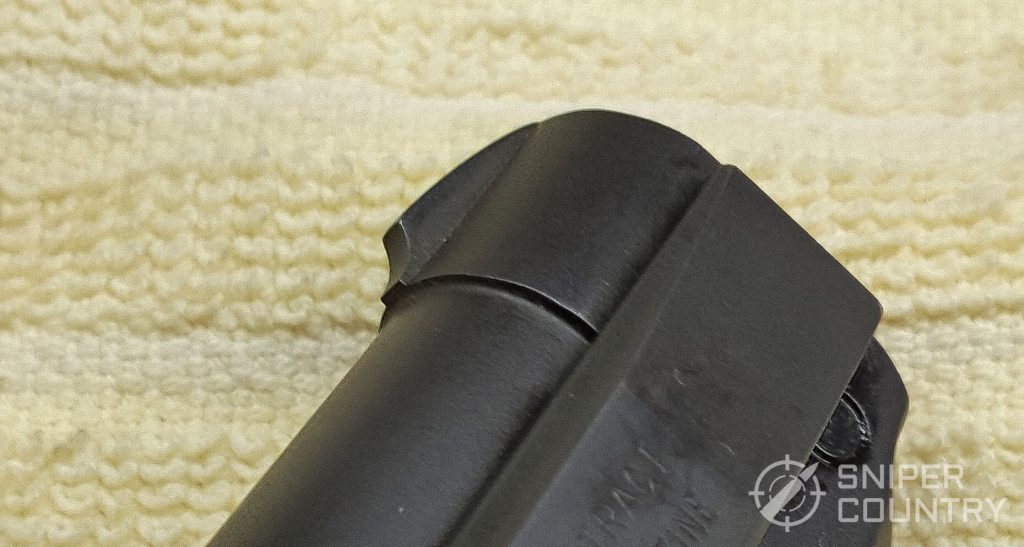
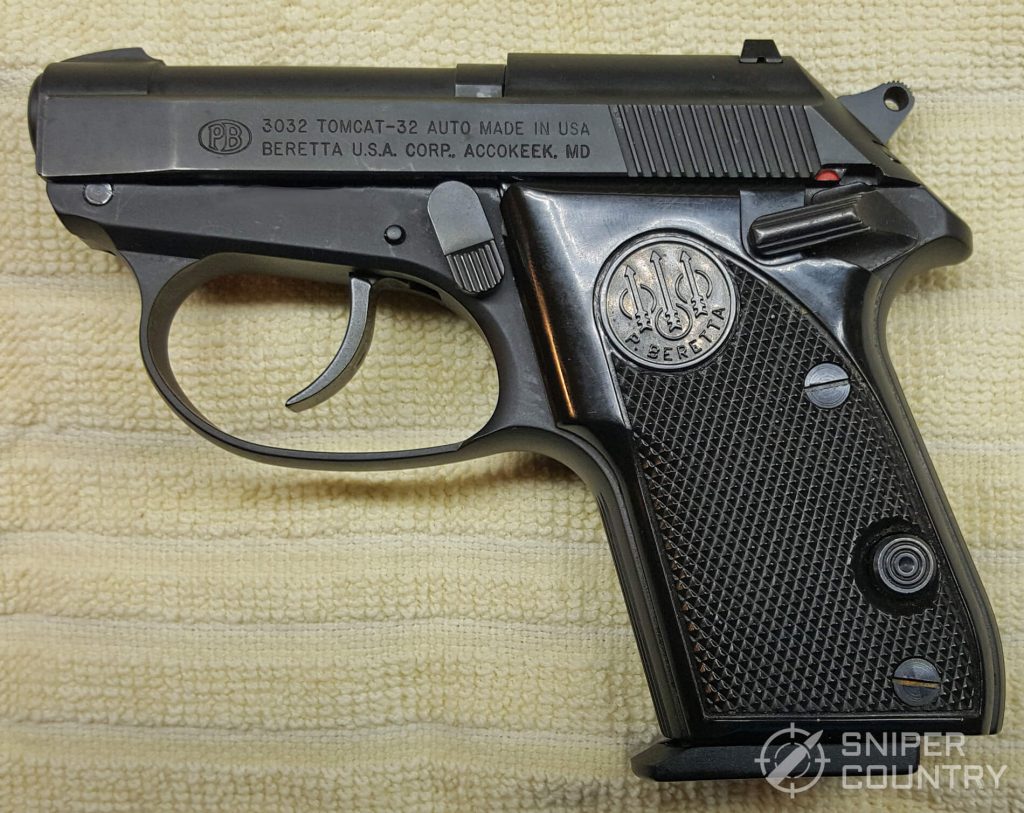
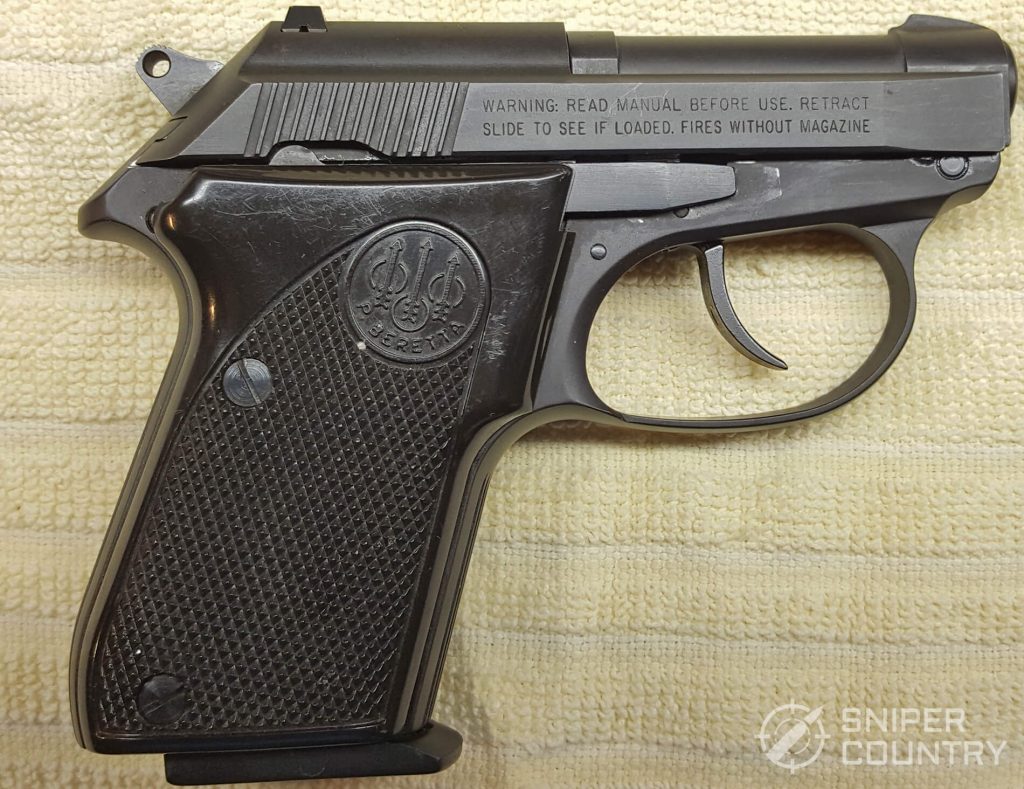
Notice how slick the gun is. Nothing much to snag on the draw.
#2 Tip-Up Barrel

This makes it very easy to get that first round in the chamber without racking the slide.
#3 Single-Double Action Hammer-Fired
In this day and age of striker-fired pistols, it was a bit refreshing to shoot a gun that used the old double-action-first shot, then single action after that.
The trigger was a bit of a challenge, with the always-present take-up before the double action sear release. You pull the trigger a long, hard way until the hammer falls. Afterwards, there was some creep in the single action mode but it was manageable.
I don’t have a trigger pull gauge, but it felt like the double action pull was around 12-15 pounds and the single action around 6 or 7. These are just educated guesses — but they should be close. Many of you will be very familiar with this set-up and would do well with it.
Also, something to remember: when you load the chamber of a regular double-action pistol, it cocks the hammer. Some pistols include a decocker that lets the hammer down, so the first shot will be double action, so the hammer is down and not cocked.
With the Tomcat, if you tip the barrel up to load the chamber, the hammer stays down so that’s not an issue. Here’s a quick tip that probably you already know about, but for some it may be new. To easily rack the slide of any hammer-fired pistol, physically cock the hammer first. That way, you don’t have to add the hammer’s spring weight to the recoil spring that you’re having to overcome in order to rack that slide.
Of course, safety is first. If you do cock the hammer first, keep the chamber empty before loading that first round. That way, no accidents can happen. I only mention this as something folks might want to try if they have issues racking a slide with the hammer down.
With the Tomcat and similar tip-up barreled-guns, it’s a moot point. Again, just a thought that might help you rack the slide a bit more easily.
#4 Sights
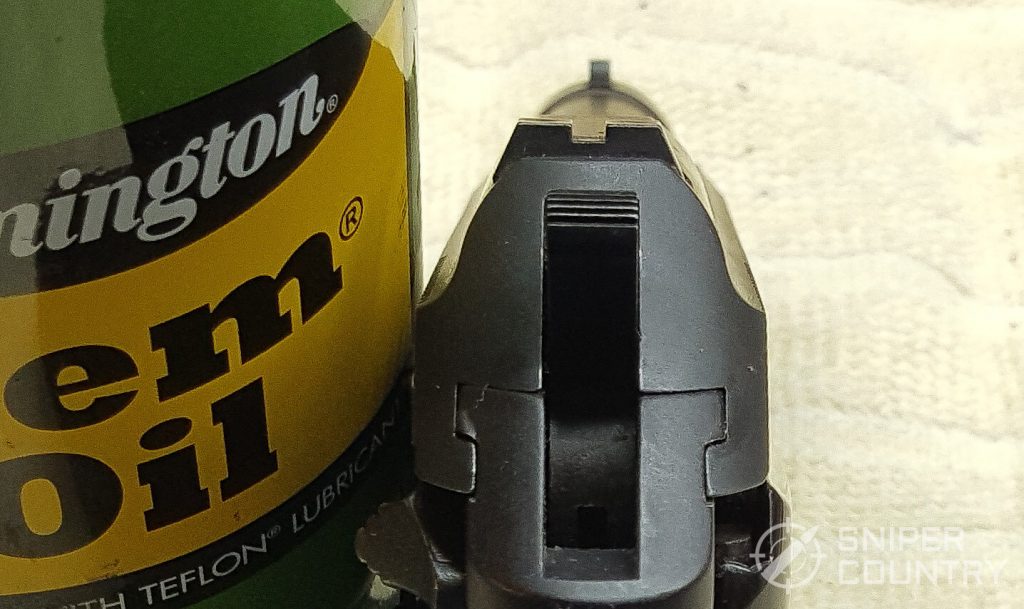
Although the sights are tiny, you can replace the rear sight in a dovetail. Tru-Glo, Trijicon, AmeriGlow — the list goes on. You can buy just a replacement rear sight or go all-out and have your front sight milled off and a dovetail cut. Then, you can buy a front/ rear sight combo.
The Tomcat is one of few true pocket guns that accept replacement sights. Here’s a screenshot from a company that will replace both sights, in case you have one of these guns and are interested.
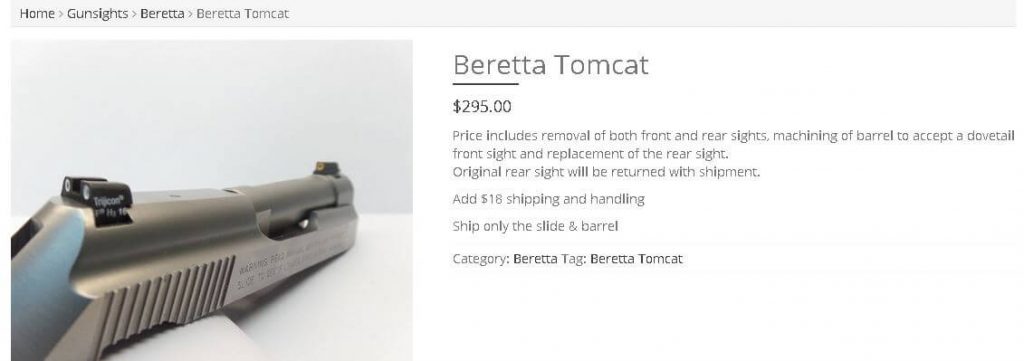
#5 Thumb Safety
Being a lefty, most thumb safeties are of very little use to me, but many shooters want thumb safety on their pistols, especially if they are not striker-fired. The Tomcat doesn’t have a firing pin block, so technically, it is not drop-safe.
If you carry it with a loaded chamber (why have a tip-up barrel if you’re not going to do that?), use the thumb safety. To sum up, from my research, I found that the gun is not drop-safe safe with the hammer down on a loaded chamber.
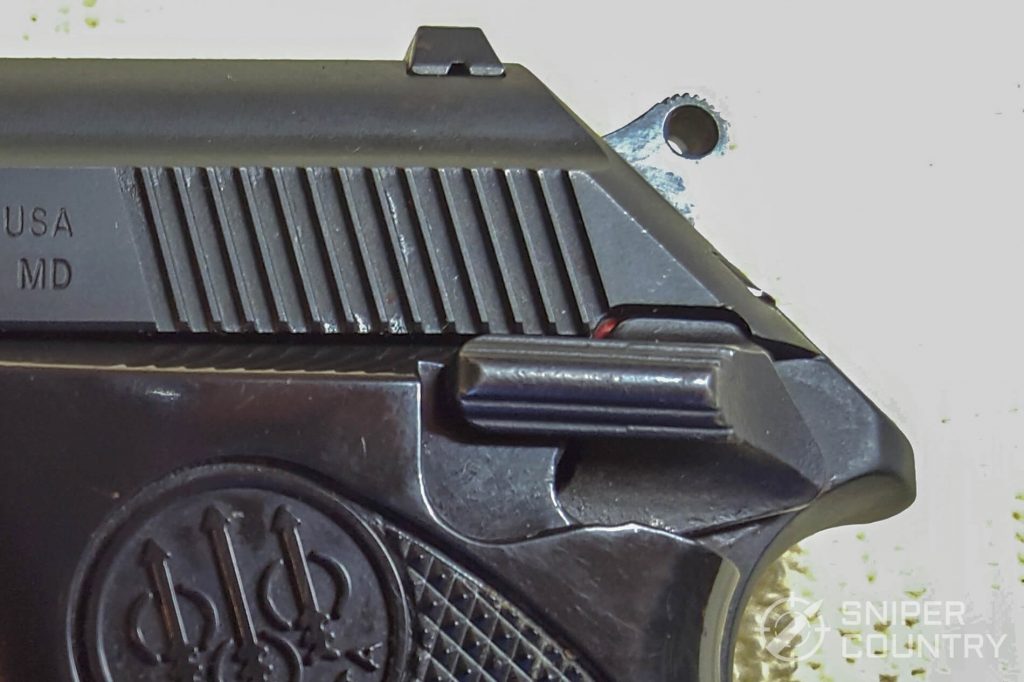
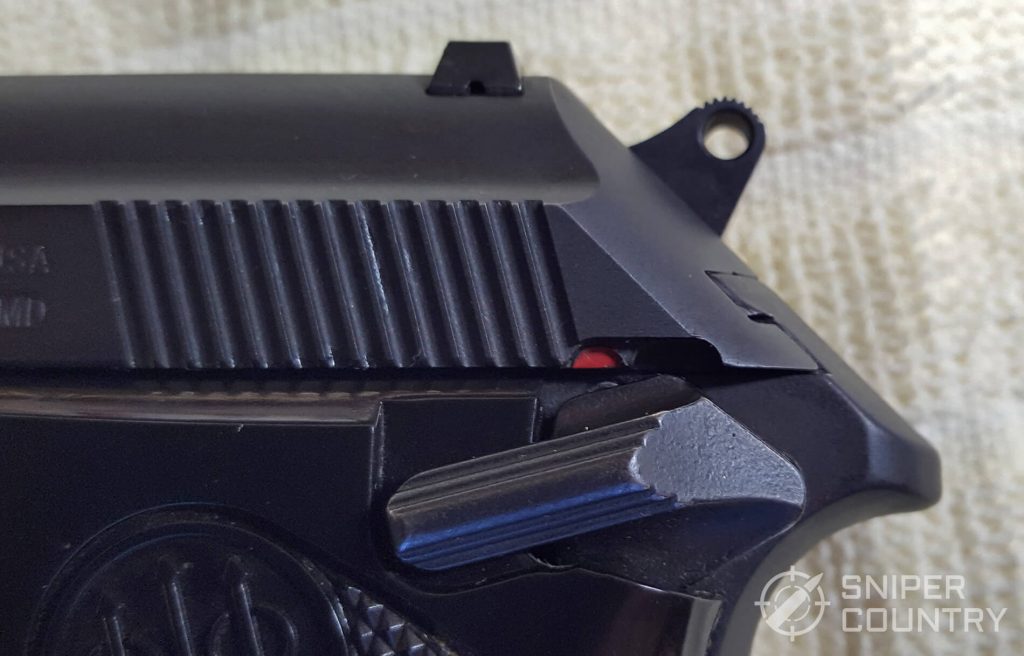
Beretta 3032 Tomcat Review: Other Photos
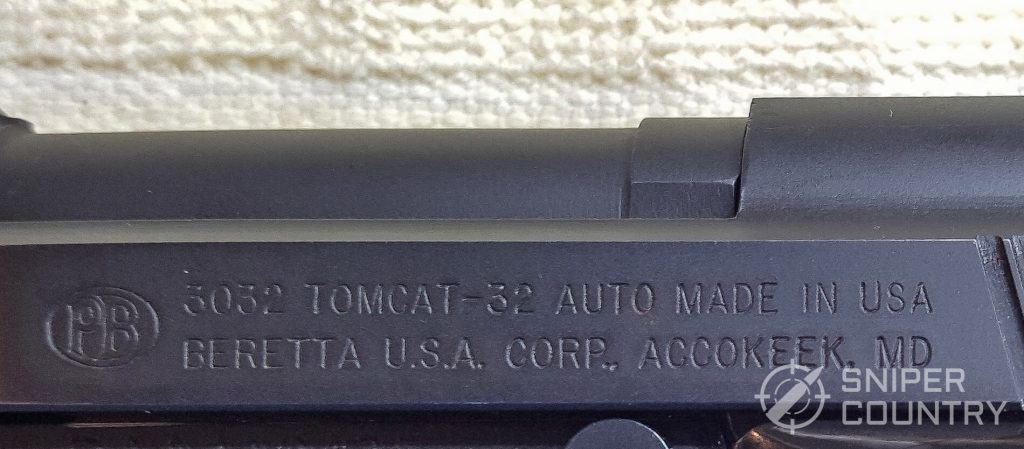
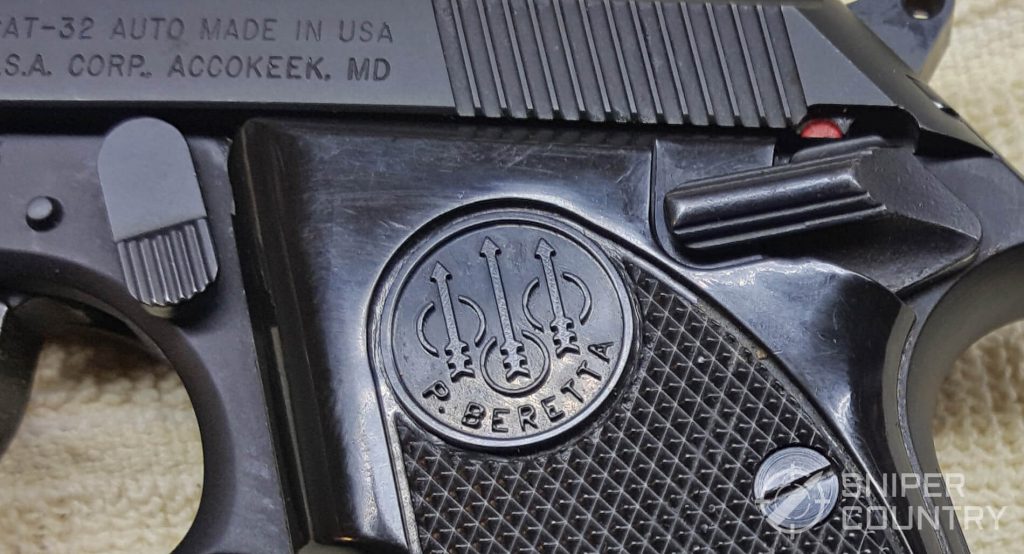
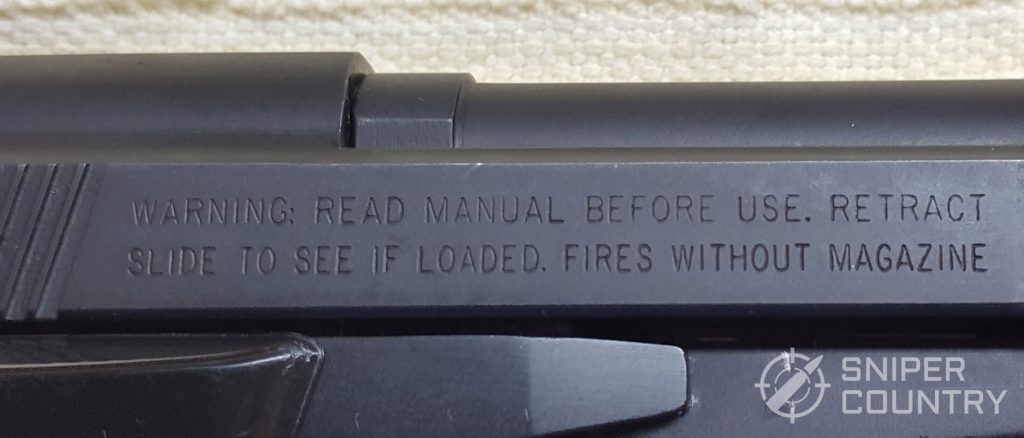

Beretta 3032 Tomcat Review: Shooting Performance
I shot the Tomcat with the only .32 ACP load I had at the time, some Winchester White Box 71-grain full metal jacket. Here is a photo of a target I shot at 10 yards:
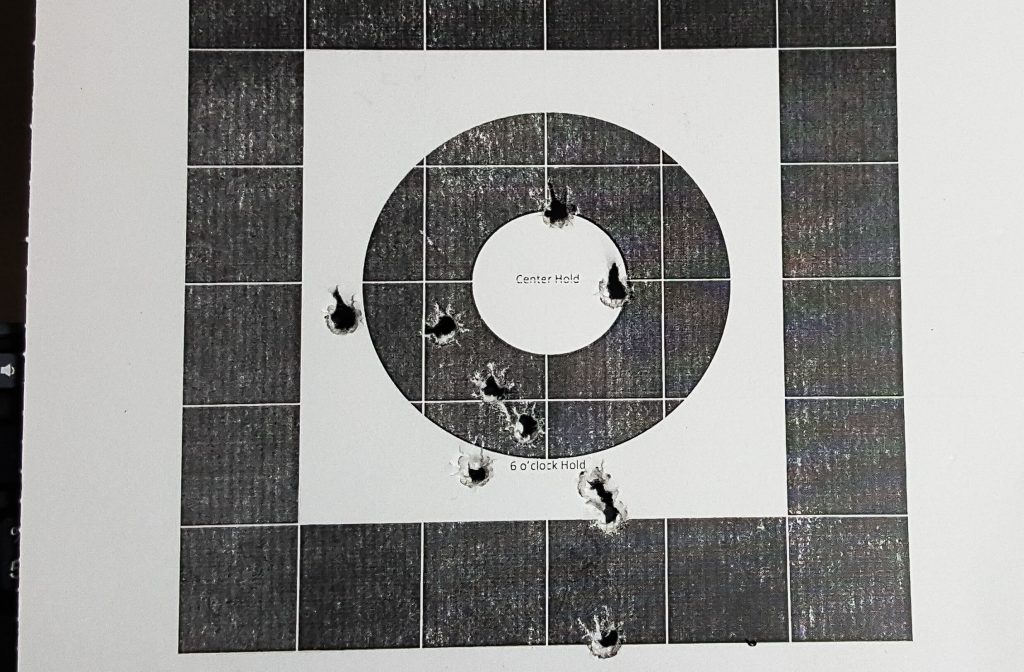
This is, again, one of my handy-dandy homemade targets with the inch grid and both center- and 6:00 holds marked (in case somebody forgets.). There are 10 holes in the target, one for each time I pulled the trigger.
They are a bit low but all in all not bad in terms of actual point-of-impact. The gun pretty well shot to its sights. If you discount the flyers (I’ll let you decide which are flyers), it isn’t that bad. My brother-in-law carries the gun with Gold Dots and is pleased with the results.
Speaking of .32 ammo, there are two schools of thought. One is that you shoot the best defensive ammo that you can find, a fast jacketed hollow point that will expand in the target. The second school would have you shoot full-metal-jacketed rounds in order to get the most penetration from the rather-slow-moving 71-grain bullet (I clocked the FMJ rounds at 700 fps over my Caldwell chronograph).
Since we can’t always rely on the bullet to expand, I tend to go for penetration. I have carried both types of ammo in my Spectrum .380. Only you can decide what you like in your gun.
Here is a gel test screen shot from luckygunner.com.
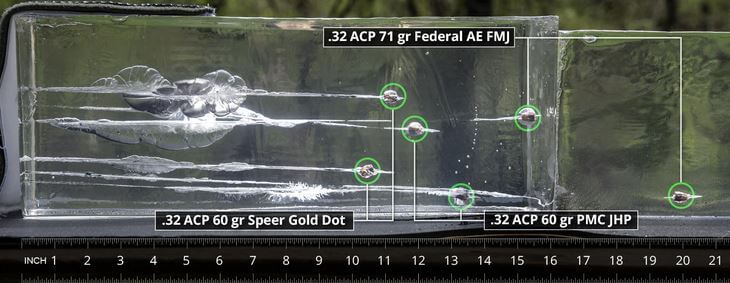
They tested two jacketed hollow points: the Gold Dot and the Federal AE, plus one full metal jacket.
As you can see, the full metal jacket rounds penetrated the furthest (well into the FBI’s desired penetration range of between 12 and 18 inches). According to the accompanying chart (read about it here), neither hollow point expanded beyond .32 inch, the diameter it went in at.
Draw your own conclusions, but I think if I were carrying a .32 (or .25, for that matter), I might be inclined to carry a full-metal-jacketed round. At least with the penetration they get, you have a chance of hitting something that would incapacitate the bad guy.
I might be a bit concerned with the hollow points, especially in winter (when heavier coats are the norm around here) that they just wouldn’t get far enough in to do the job. Why bring up this particular discussion in a gun review? Because, since it is a .32, these things matter. Many people carry .32s. Maybe this winter, the .45 will get out more under a coat. My point is that, yes — I’d carry the Tomcat in a pocket if that’s what the weather dictates and not feel under gunned.
BONUS OFFER: Get your free shooting range targets to print at home!
Get your free targets to print at home!
Beretta 3032 Tomcat Review: Shooting Impressions
When I shot the Tomcat, the trigger had me a bit perplexed until I caught on to it. I fired all shots single action, cocking the hammer for the first shot. As mentioned above, there was a little creep before it released the hammer. But nothing that couldn’t be dealt with and compensated for.
I used a high-center hold and it still shot low for me (my new glasses are in at the eye doctor’s). I never ever blame a gun that is not mine if it doesn’t shoot exactly where I aim — everyone’s eyes are different. The groups were as good as they were.
Also, I shot at 10 yards. For some, that might be long range for a .32. Seven or even five yards are the norms for calibers such as this, so why ten? That’s just how my range was set up, plus I figured if it did that decently at 10, it would do even better at closer ranges.
At least the sights are useable on the Tomcat. You get a definite post-in-the-middle-of-the-notch sight picture. The post is a bit wide but still very useful. It might be interesting to shoot it with aftermarket sights installed. I’m sure groups would improve. Recoil was also minimal.
Beretta 3032 Tomcat Review: Disassembly and Cleaning
This is very simple. First, remove the magazine and make sure the gun is empty. Then, push the barrel release lever forward, releasing the barrel.

Then, pull the barrel to a vertical position.
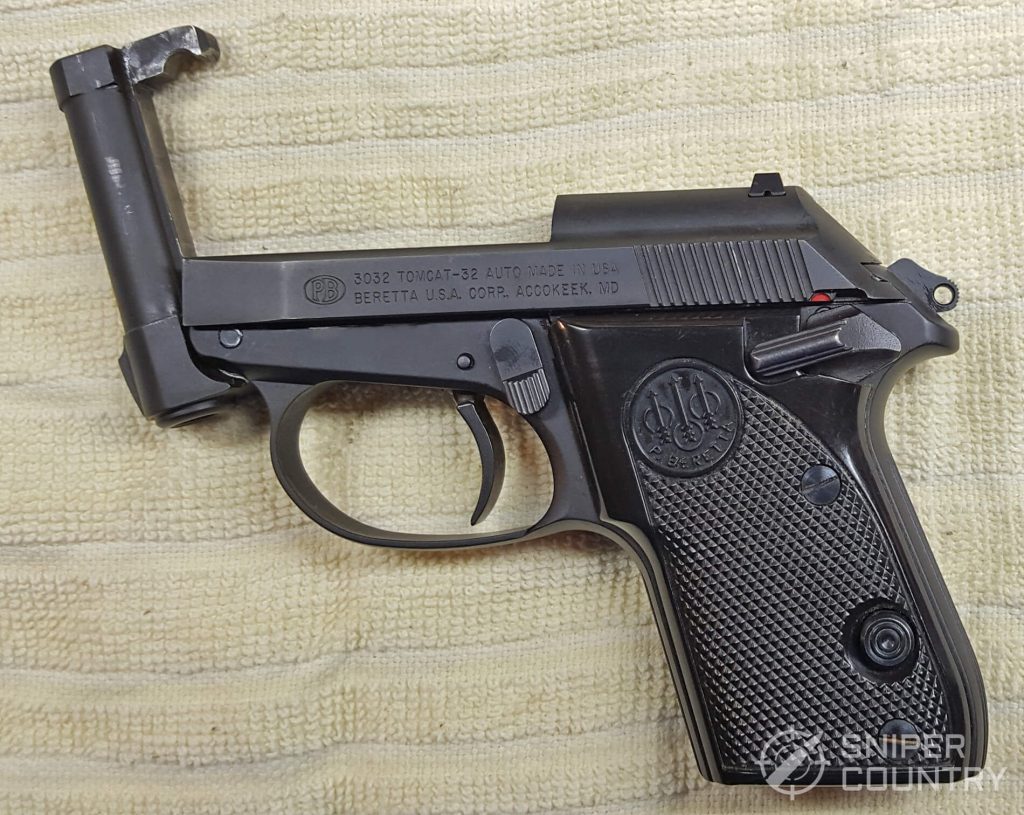
Pull forward and up on the slide.

Pull the slide off.
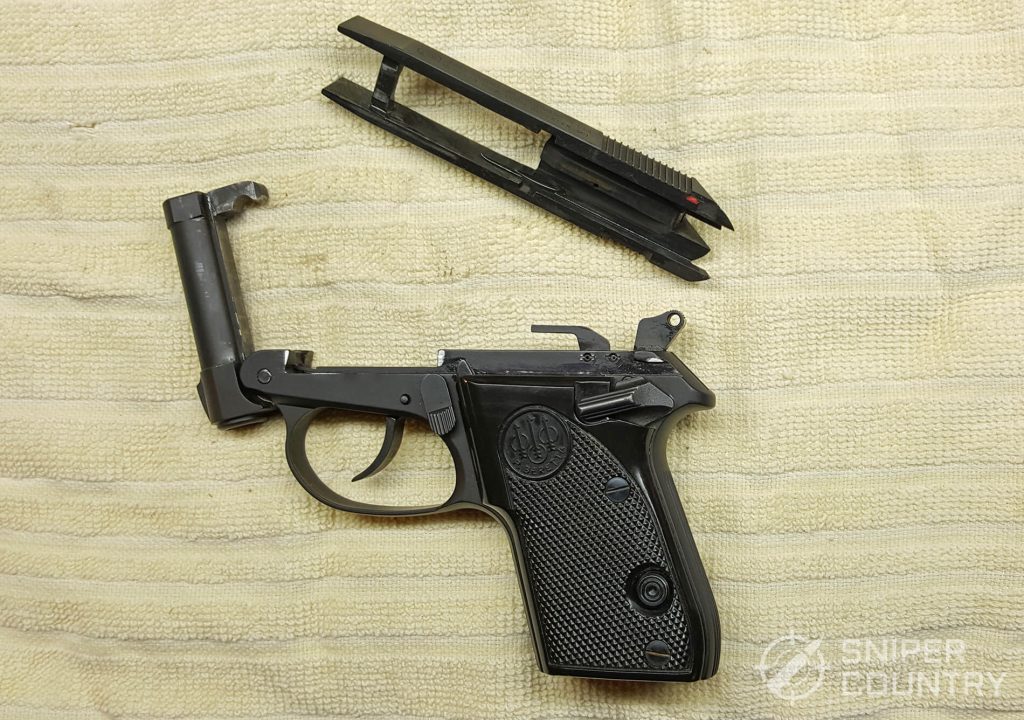
That’s it. Clean as usual, then reverse the process to put it back together.
Beretta 3032 Tomcat Review: Problems
1. Cracked Frame
Unfortunately, the Beretta Tomcat 3032 is well-known for having a notoriously fragile frame.
While it may be possible to address the other problems, the cracked frame may be something you have to accept. While the slide and barrel of the Tomcat are composed of carbon steel, the rest of the frame is built of aluminum alloy.
The cannon’s maximum muzzle energy is designed to endure 130 ft-lbf (176 Joules). Therefore, exceeding this limit while firing might cause the frame to collapse. Before going out to acquire ammunition, double-check the exact requirements.
2. Jamming
Even the Beretta Tomcat 3032 may get stuck in a jam on occasion. Reasons for this may include shaky hands, improper ammunition, a contaminated weapon, or all of the above. The Tomcat requires regular maintenance, including cleaning and oiling. A filthy gun may also cause jams.
3. Broken Firing Pin
Dry firing has a major impact on the Beretta Tomcat 3032. It’s highly discouraged since it may easily damage the firing pin.
An important piece of advice: never dry fire your Tomcat. Even if a few minor flames here and there probably won’t cause much damage, it’s best to be cautious. You can get a replacement firing pin for the Tomcat, which ought to fix the problem you’re having with it.
Wrap Up: Is the Beretta 3032 Tomcat a Good Gun?
Some folks think the Beretta 3032 Tomcat is a bit too chunky for a .32, as other guns of that caliber tend to be less than an inch in width and lighter. I think the tip-up barrel negates that concern. You might gain a width loss of a few thousandths of an inch and a few ounces less with other guns. However, the ability to load the Tomcat’s chamber without racking the slide means a lot, especially for those of us with arthritic hands.
The only other thing that might cause a bit of hesitation would be the fact that there is no firing pin block. However you slice it, with proper gun handling and safety procedures (like you’d use with any other gun), the Tomcat is a viable candidate for a backup gun or even primary carry if the caliber doesn’t put you off.
I had a Taurus PT-22 once upon a time. Taurus bought a factory in Brazil that Beretta had used to build pistols for military consumption, and with that, they earned the right to build their own versions of certain Beretta models. The PT-92, Taurus’ version of the Beretta 92, is an improved design by moving the thumb safety from the slide to the frame.
I owned that PT-22, a .22 LR version of the Beretta 21A, for a good while. I appreciated the tip-up barrel. Here is what it looked like:
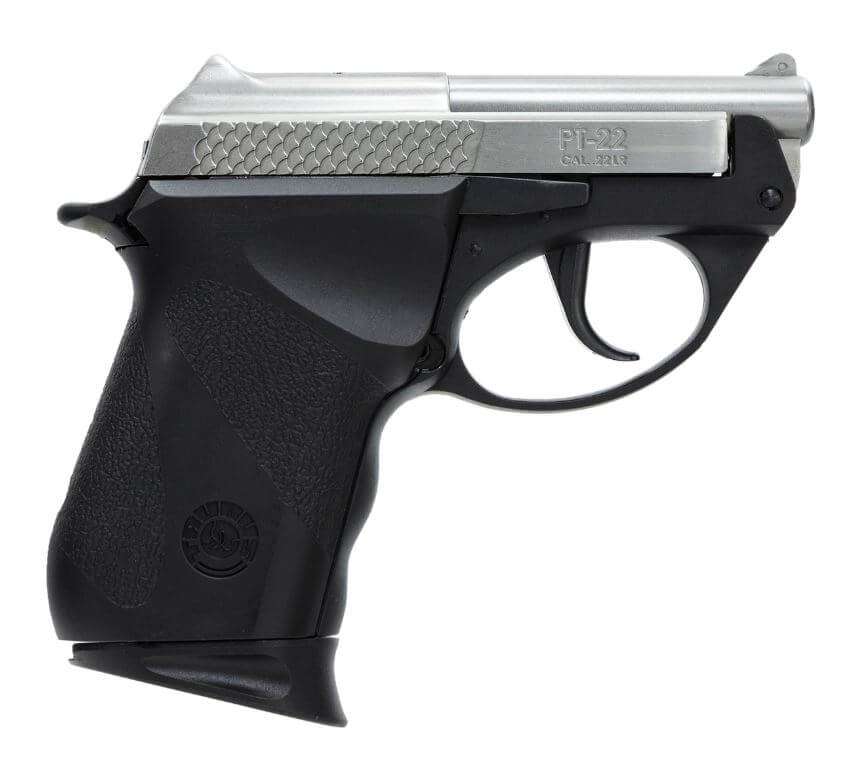
It is a faithful (and legal) copy of the Beretta, except in .22. You could sure do worse than buying a Beretta Tomcat (or the Bobcat in .22 or .25). I liked the one I shot and could see it going along with me when walking the woods, hunting, fishing or other outdoor activity. I think that, given its limitations, the Tomcat would be worth a hard second look if you see one in a gun case.
Having owned something very similar, I can say that with authority — check it out.
Let me know about your experiences with the Tomcat or other tip-up barrel gun in the comments below. Stay safe and get out and shoot.

